
- Details
- By Darren Thompson
OKLAHOMA CITY—This weekend, the First Americans Museum (FAM) in Oklahoma City opened its doors to the public with a weekend of performances, demonstrations, and ceremonies from dignitaries representing all of the state’s 39 tribes.
The FAM is a decades-in-the-making 147,000 square foot museum aimed at sharing the history and culture of the tribes in the state. Its curators are also from tribes in the state and the exhibits reflect a chronological history that includes removal from many tribes’ original homelands. In addition to history, visitors to the museum also will experience the many contributions by Oklahoma Native people in all aspects of society.
Want more Native News? Get the free daily newsletter today.
“The opening weekend is just the beginning,” FAM CEO James Pepper Henry told Native News Online. “The museum is in its infancy and just like a baby, we have to raise it so that it becomes more than what it is today.”
Only a few tribes were Indigenous to the state of Oklahoma. The majority were forcibly removed to the area from many parts of the United States including California (Modoc), Florida (Seminole), New York (Seneca, Cayuga), and dozens more. The state was once considered Indian Territory and its name comes from the combination of two Choctaw words: “Okla” and “Homma”, meaning “Red People.”
The museum is on 40 acres of land along the Oklahoma River and includes a courtyard for performances and demonstrations. The site also features a mound that visitors can walk to the peak of so they can experience mound building culture and get a view of downtown Oklahoma City. In addition to its exhibit, the FAM features selections from the Smithsonian’s National Museum of the American Indian, two theaters, a gift store featuring items made by Oklahoma Native artists, and a restaurant that features modern cuisine made with Native ingredients and tribally-specific dishes.
Highlights throughout the weekend includes the procession of the all tribes, performances by members of all of the tribes, fashion shows, and a performance by rap group duo Lil’ Mike and Funnybone from “Reservation Dogs.”

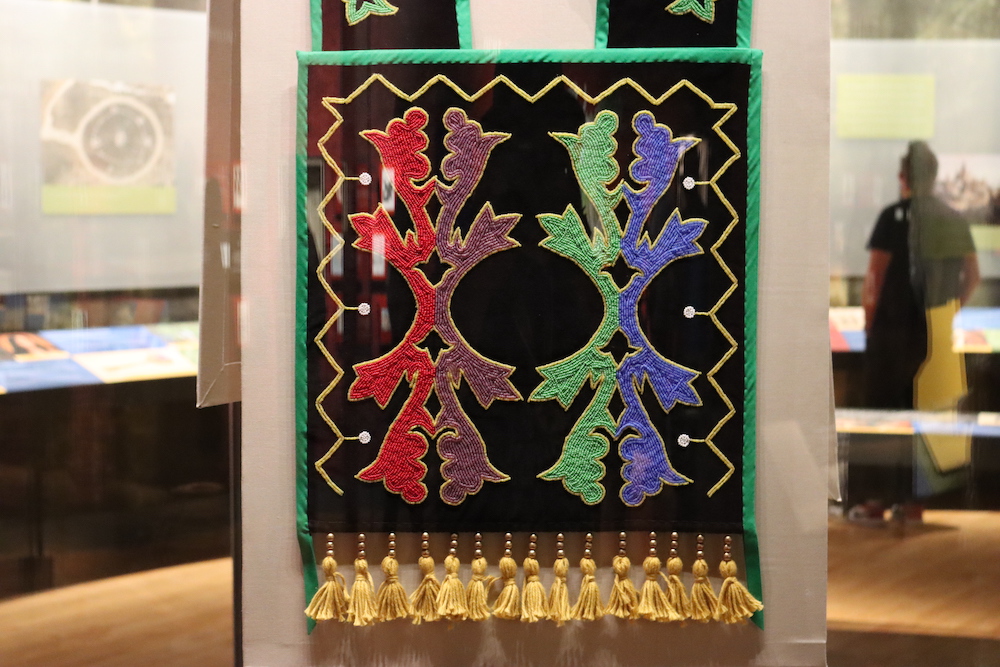
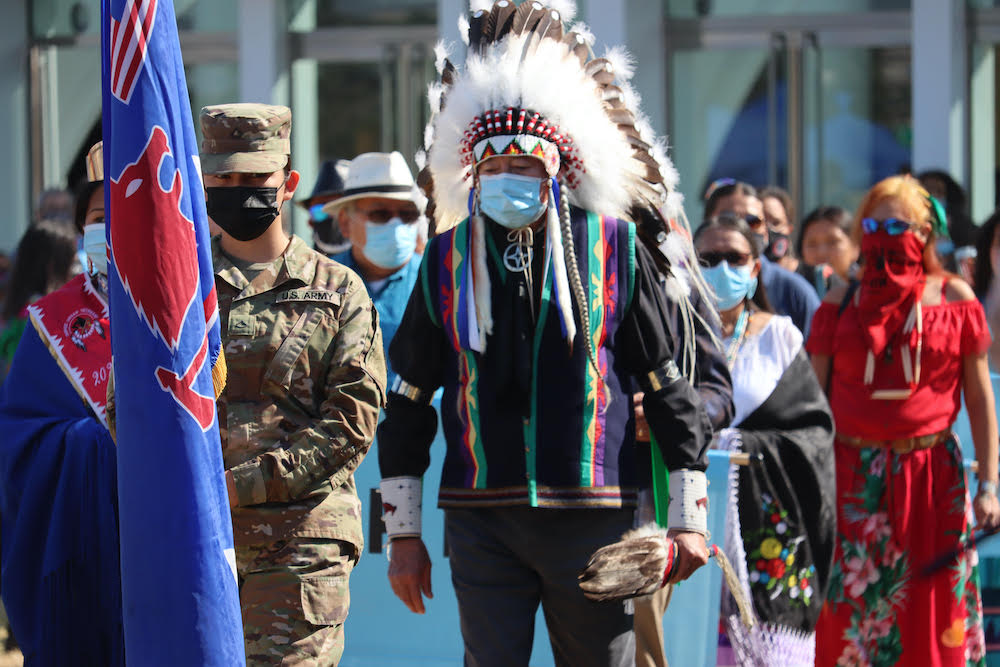 Walter Echohawk, Pawnee Nation, attends the procession during the grand opening of the First Americans Museum on Saturday. (Photo/Darren Thompson for Native News Online)
Walter Echohawk, Pawnee Nation, attends the procession during the grand opening of the First Americans Museum on Saturday. (Photo/Darren Thompson for Native News Online)
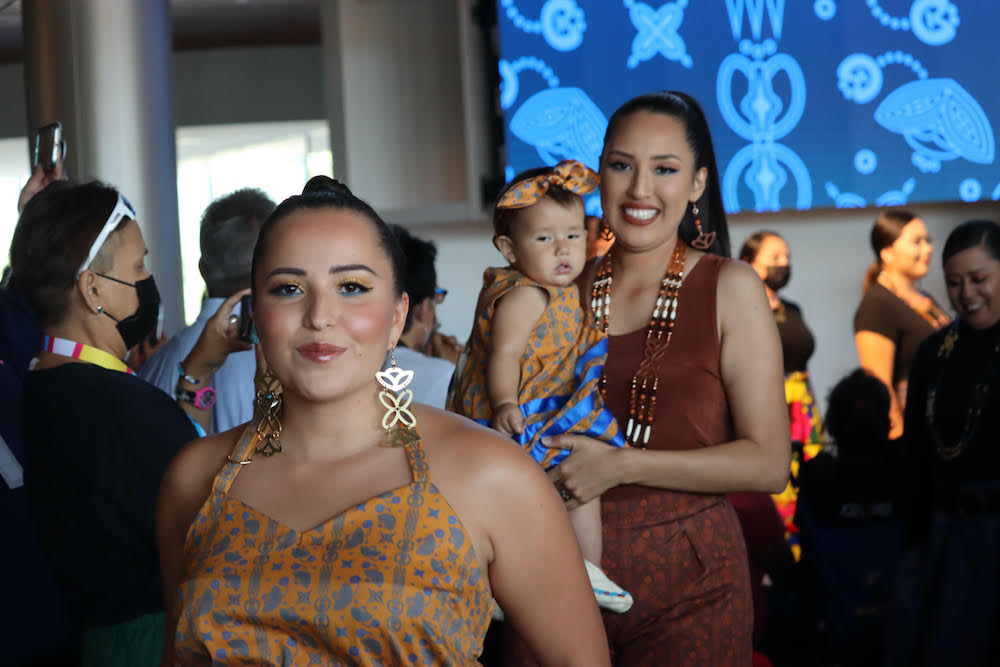 Shaina Nizhone Snyder and Erica Pretty Eagle Moore participate in one of the fashion shows during the First Americans Museum fashion show on Sunday, September 19, 2021. (Photo/Darren Thompson for Native News Online)
Shaina Nizhone Snyder and Erica Pretty Eagle Moore participate in one of the fashion shows during the First Americans Museum fashion show on Sunday, September 19, 2021. (Photo/Darren Thompson for Native News Online)
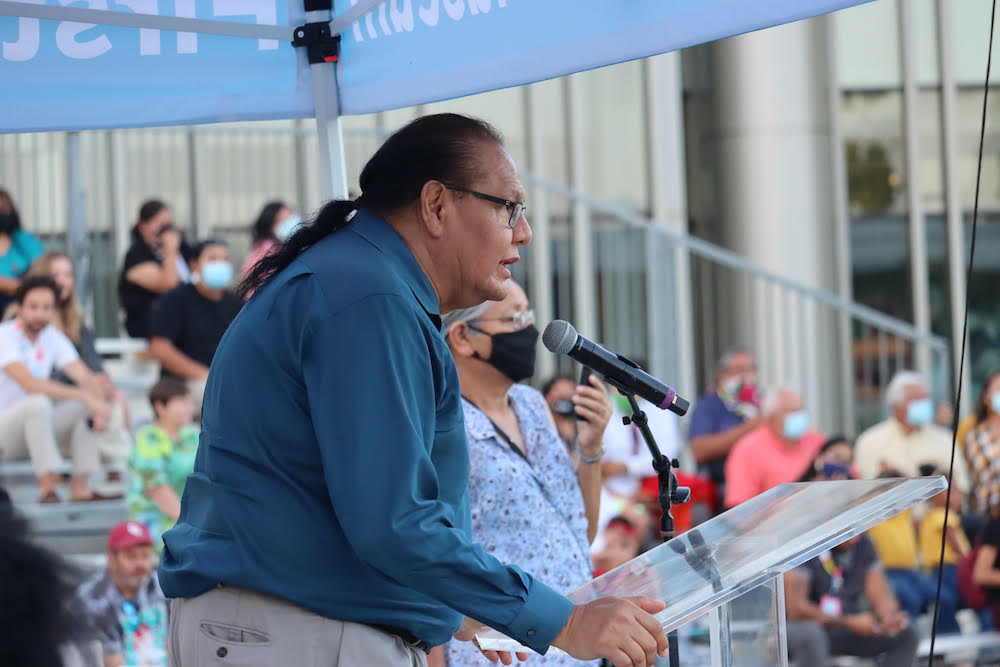 Dennis Zotigh, Kiowa/San Juan Pueblo/Santee Dakota, a cultural specialist for the Smithsonian’s National Museum of the American Indian attends the grand opening of the First Americans Museum on Sunday, September 19, 2021 in Oklahoma City. (Photo/Darren Thompson for Native News Online)
Dennis Zotigh, Kiowa/San Juan Pueblo/Santee Dakota, a cultural specialist for the Smithsonian’s National Museum of the American Indian attends the grand opening of the First Americans Museum on Sunday, September 19, 2021 in Oklahoma City. (Photo/Darren Thompson for Native News Online)
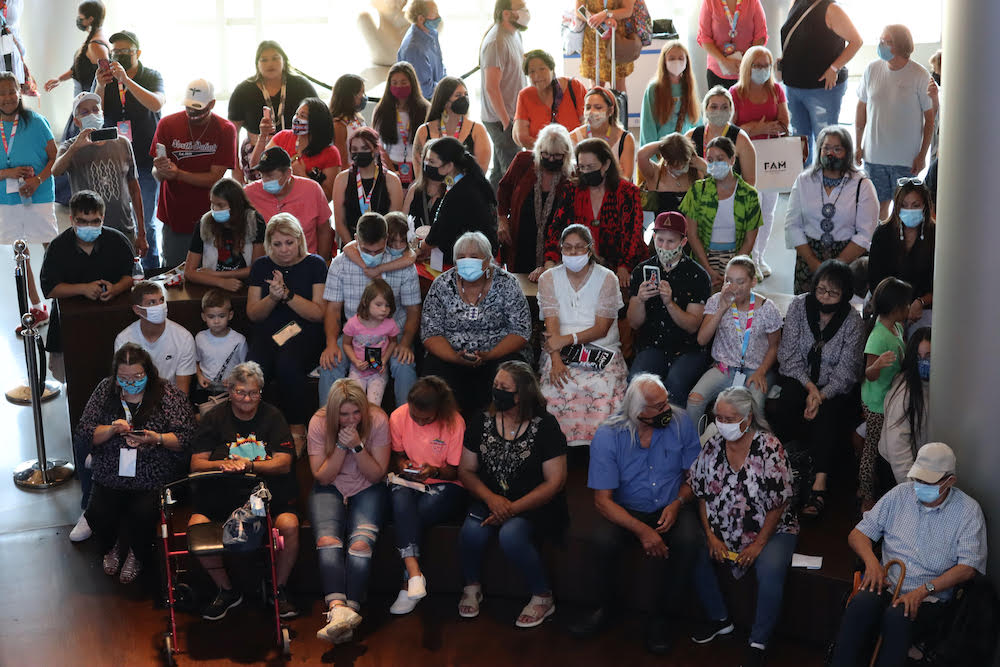 Crowds in the Xchange Theater for the grand opening of the First Americans Museum in Oklahoma City on Saturday. (Photo/Darren Thompson for Native News Online)
Crowds in the Xchange Theater for the grand opening of the First Americans Museum in Oklahoma City on Saturday. (Photo/Darren Thompson for Native News Online)
 Cheyenne Kippenberger (Seminole Tribe of Florida), former Miss Indian World, attended the grand opening of the First Americans Museum in Oklahoma City on Saturday, September 19, 2021. (Photo/Darren Thompson for Native News Online)
Cheyenne Kippenberger (Seminole Tribe of Florida), former Miss Indian World, attended the grand opening of the First Americans Museum in Oklahoma City on Saturday, September 19, 2021. (Photo/Darren Thompson for Native News Online)
More Stories Like This
Celebrating 50 Years: The Rockwell Museum Looks to the Future with "Native Now"AMC Announces Return of Dark Winds for Season 4, Premiering February 15
Film featuring Teyton Colbert to hit theaters in November
Tlingit Hunter and Artisan Heather Douville Shares Cultural Traditions in New MeatEater Series “Our Way of Life”
What Inspires Indigenous Ballet Dancer Jock Soto
Help us tell the stories that could save Native languages and food traditions
At a critical moment for Indian Country, Native News Online is embarking on our most ambitious reporting project yet: "Cultivating Culture," a three-year investigation into two forces shaping Native community survival—food sovereignty and language revitalization.
The devastating impact of COVID-19 accelerated the loss of Native elders and with them, irreplaceable cultural knowledge. Yet across tribal communities, innovative leaders are fighting back, reclaiming traditional food systems and breathing new life into Native languages. These aren't just cultural preservation efforts—they're powerful pathways to community health, healing, and resilience.
Our dedicated reporting team will spend three years documenting these stories through on-the-ground reporting in 18 tribal communities, producing over 200 in-depth stories, 18 podcast episodes, and multimedia content that amplifies Indigenous voices. We'll show policymakers, funders, and allies how cultural restoration directly impacts physical and mental wellness while celebrating successful models of sovereignty and self-determination.
This isn't corporate media parachuting into Indian Country for a quick story. This is sustained, relationship-based journalism by Native reporters who understand these communities. It's "Warrior Journalism"—fearless reporting that serves the 5.5 million readers who depend on us for news that mainstream media often ignores.
We need your help right now. While we've secured partial funding, we're still $450,000 short of our three-year budget. Our immediate goal is $25,000 this month to keep this critical work moving forward—funding reporter salaries, travel to remote communities, photography, and the deep reporting these stories deserve.
Every dollar directly supports Indigenous journalists telling Indigenous stories. Whether it's $5 or $50, your contribution ensures these vital narratives of resilience, innovation, and hope don't disappear into silence.
 The stakes couldn't be higher. Native languages are being lost at an alarming rate. Food insecurity plagues many tribal communities. But solutions are emerging, and these stories need to be told.
The stakes couldn't be higher. Native languages are being lost at an alarming rate. Food insecurity plagues many tribal communities. But solutions are emerging, and these stories need to be told.
Support independent Native journalism. Fund the stories that matter.
Levi Rickert (Potawatomi), Editor & Publisher
